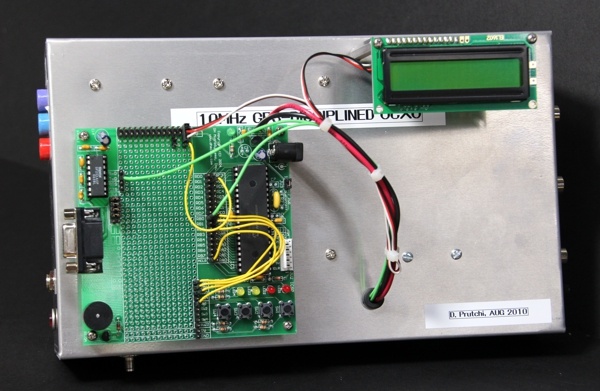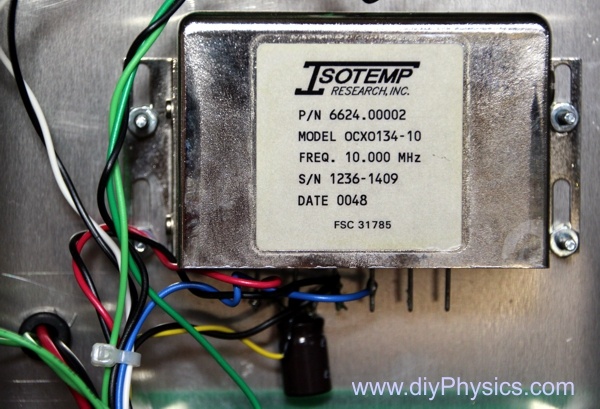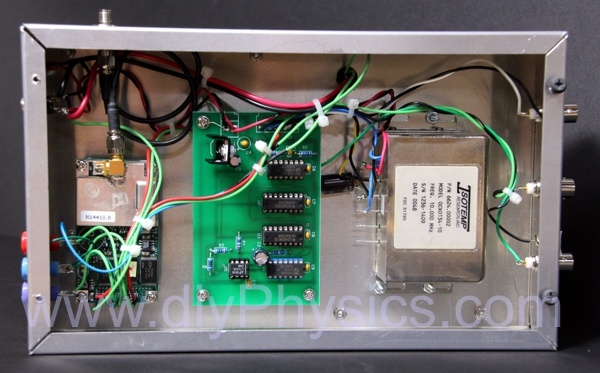
Last week I posted detailed construction information for my rubidium atomic clock frequency reference. Besides that unit, I also built a GPS-disciplined 10 MHz oscillator to serve as a secondary frequency reference, as well as a source of GPS NMEA data for my ham shack instruments that can use precise location and real-time-clock data (e.g. for satellite tracking).

As shown in the block diagram above, the 10 MHz signal is produced by an oven-stabilized 10 MHz crystal oscillator that is locked by a phase-locked-loop circuit (PLL) against the precision 10 kHz signal generated by the GPS receiver module. In addition to the 10 MHz signal, precision 10 kHz and 1 Hz signals are also output by the system. The 1 Hz signal is especially useful as a precise 1 pulse-per-second reference for clocks that can accept such input.

The raw NMEA data generated by the GPS receiver is sent to a RS-232 level converter and to a PIC microcontroller. The PIC decodes the data and displays exact location and universal time information. The RS232 data are sent to instruments around my shack that can use it, for example for precision satellite tracking with my space-communications antenna array.

The oven-controlled crystal oscillator (OCXO) is an Isotemp model OCXO134-10. The datasheet is available here: ocxo134-10.

The GPS receiver that I used is a surplus OEM unit made by Rockwell (information available here: Rockwell_Jupiter_GPS ). However, any other GPS module that outputs a GPS-derived 10 kHz signal may be used.

The PLL circuit (click on the figure to enlarge) was designed by Joe Ruggieri (AKA eBay Pyrojoseph) and constructed on a circuit board that he sells. The circuit connects directly to the 10 MHz OCXO and to the 10 kHz output from the GPS module. The circuit requires 12 VDC, which I feed from an external power supply.

As shown in the following figure, the GPS-disciplined oscillator performs superbly as evidenced by comparing its output to that of my rubidium atomic clock reference:


